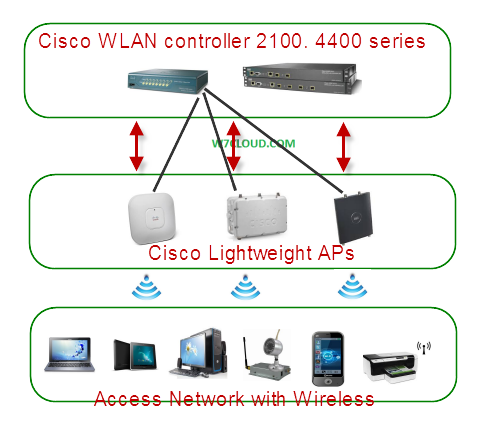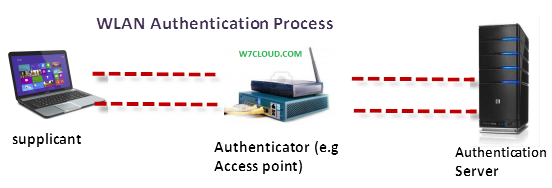
This article is related to Network Structure and network infrastructure, also we will discuss redundancy by the use of devices, media, and route redundancy to improve network availability. Network architecture separates the network design into more manageable modules. Modular network design simplifies the network and provides you many benefits. The hierarchical network model or three-layer model was one of the first Cisco models that divided the network into core, distribution-layer, and access layers.
On the other hands Cisco Enterprise Composite Network Model provides a functional modular approach to network Design. In modular network, modules are used to organize server farms, network management, campus networks, WANs, and the Internet.
Modular and hierarchical models enable you to design a hierarchical network that meets current requirements and can grow to meet future requirements. Modular Network design use layers to simplify the tasks for inter-networking. Each layer can focus on specific functions, allowing you to choose the right systems and features for each layer. Hierarchical models apply to both LAN and WAN design.
Benefits of the Modular Network design
Following are the benefits of using Modular Network design for your network design:
- Cost savings
- Ease of understanding
- Modular network growth
- Improved fault isolation
Following are the important aspects of network architecture and modular design and you can implement these solutions at large network enterprises..
- Intelligent network services
- Security
- Availability
- Voice Transport
- Content Networking
Intelligent Network Services:
Intelligent Network Services involves the rich set of processes for packet forwarding, network management tools, Quality of services for controlling different aspect of network, Security mechanisms and availability.
The network management is a service that allows us to control different parts of network like server farm, can mange multilayer switches, also allow us managing WAN and access component of network.
Network management involves the system administration, administration server like Microsoft server 2008 or 2003, Linux UNIX, Security aspect like authentications, encryption, fail-over techniques, application base filtering and IDS.
High Availability:
While designing a network we need to focus on high Availability of network. The key components for achieving high availability are
Hardware Device redundancy: Hardware redundancy is expensive but also provides you the high availability. You can achieve the this type of redundancy from the redundant features of hardware for example many devices have port redundancy, if a port is down other got up and devices with power redundancy if the power from one source is down, device will automatically shift to other power.
Link Redundancy: You can create the redundant links between your high end switches in your network, mesh topology is best way for accomplishing link redundancy. In Cisco switch network you can attain the link redundancy very easily, because STP prevent for creating loop in networks.
Route Redundancy: You define the redundant routes with dynamic routing protocols like RIPv2, EIGRP and OSPF.
Redundant servers and workstations: you can use the redundant servers for your important services, think like primary and secondary servers are good examples. You can also use the software base redundancy using different protocols lik hot standby routing protocol (HSRP) providing you multiple gateway redundancy if a gateway or ISP is down your clients are automatically shifted to other gateway.
Voice Transport:
Voice transport is a network solution that’s run on the top of a network. While implementing a transport solution first you need to consider your enterprise network, implement the data component first then integrate your voice solution into your network. Voice transports include VoIP and IP telephony
Voice over IP:
Normally in VoIP solution we have a PBX environment that may be connected to PSTN and we have the analog phones. VoIP solution uses the voice enable routers that convert analog to IP packets.
IP Telephony:
In IP telephone we have IP Phones and there may be a Call Manager Server for routing and converting voice into IP. Switches with in-line power can be part of this type of network solution for providing the power to IP phones.













